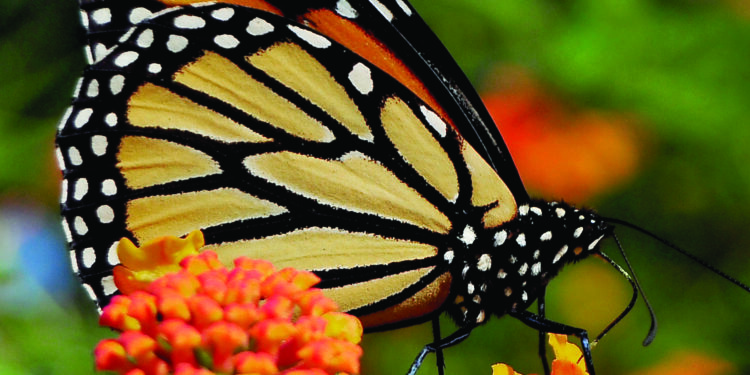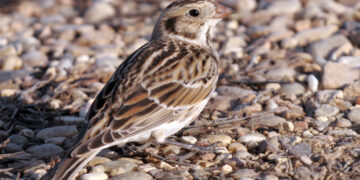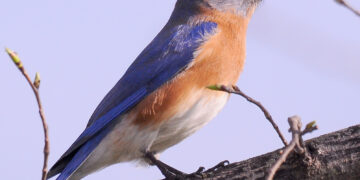Big happenings at Hackberry Flat
Well, it’s that time of year again, when the monarch butterflies make their southerly journey through Oklahoma. And one of the best places to take it all in is at Hackberry Flat Wildlife Management Area near Frederick.
The place is an important stopover for migrating monarchs, which can sometimes number in the hundreds or thousands each day.
A Monday post to the Facebook page for the Oklahoma Department of Wildlife Conservation reads: “Watch migrating monarchs by day and by night at Hackberry Flat Center! Register with biologist Melynda.hickman@odwc.ok.gov to attend one of the four morning activities or four evening activities happening Oct. 1-8.”
Morning activities are at 9 a.m. Oct. 2, 3, 4 and 8. Those attending will meet at the center and learn “Monarch Basics” and then tag and release.
Evening activities are 6:30 to 8 p.m. Oct. 1, 2, 4 and 7. Those attending will meet at the center where transport is provided to watch monarchs go to roost.
Organizers caution that pets are not allowed. In addition, children must be at least 8 years old for evening activities.
Reservations are required for both morning and evening activities. There is no fee, but organizers suggest those interested should check the status of migration on Facebook before attending.
For more information, and to check the status of monarch migration prior to attending (recommended), visit Friends of Hackberry Flat on Facebook.
Insect royalty
The subject of monarch butterflies is quite complex. However, entomologists know much more about the species now than they did even 30 years ago.
These butterflies migrate back and forth from a northern range to a southern range, and are the only butterfly in all the world that travels such a great distance.
But there is a lot more to it than that. They have many generations each year, and the butterflies that migrate south in the fall are not the ones that flew up here in the previous spring, but are the offspring of those monarchs.
And many monarchs migrate though Oklahoma in both the spring and fall. Are monarchs found in Oklahoma all summer long? The answer is yes and no.
Oklahoma monarchs
Typically, the monarchs produced in Oklahoma are part of a spring population. However, I have seen these butterflies and their caterpillars in every month of summer, which left me a bit confused. I asked an expert who told me that they are around sometimes during the summer, depending on the year.
The migration… and confusion
The monarch butterflies that spend the summer in the U.S east of the Continental Divide in the Rocky Mountains and migrate to southern Mexico. The population which summers west of the divide spends the winter along the coast of California, specifically, the southern two-thirds of the state. There is also a population that winters in southern Florida. Unless otherwise noted, for the rest of this column, I will be referring to the population which migrates through Oklahoma.
The greatest generation
While some generations of monarch butterflies live barely a month, one generation each year lives quite a long time, gets to travel, and even winters in fabulous warm areas. Actually, the places need to be cool for survival, but more on that later.
I’ll start with that generation, often called “super.”
These are the butterflies which begin the fall migration, usually around mid-August. The super generation monarchs are bigger, stronger and able to fly much greater distances than the summer generations. Their ability to reproduce is also on hold until the winter is over.
For the eastern population which migrates through Oklahoma, the highest summer monarch reproduction occurs in the Corn Belt.” The area covers only a portion of northeastern Oklahoma, but much of Kansas, Nebraska, the eastern halves of the Dakota states, Minnesota, Iowa, Missouri, Illinois, Indiana, and Ohio, etc. Pretty much where large corn crops are produced, that is where monarch production is highest, according to MonarchWatch.org.
However, the summer reproduction occurs over much of the northern half of the U.S. east of the Rockies. And a little way into Canada, eh, where the northern range of the milkweed plant ends. The relationship between monarchs and milkweed is one of immense importance, but more on that later.
The return home
According to the National Aeronautics and Space Administration, monarchs overwinter in the Transvolcanic Mountains of central Mexico. They gather by the millions atop just 10 to 12 volcanic summits. The butterflies cling to the trunks, branches and needles of the oyamel fir trees, which only grow on the high slopes of certain mountains in central Mexico.
The climate where the monarchs overwinter is just right – not too warm, and not too cold.
The monarchs which traveled to Mexico in autumn leave the roosts about the second week of March. They fly north and east laying their eggs on milkweed plants as they locate them along the way. Migrating females that lay the eggs recolonize the southern U.S. before they die, according to MonarchWatch.org.
The first spring caterpillars hatch and eventually become beautiful orange butterflies.
MonarchWatch.org reports that, over the summer, there are three or four generations of monarch butterflies, depending on the length of the growing season.
Because each female lays hundreds of eggs, the total number of butterflies increases throughout the summer. Before the summer ends, there are once again millions of monarchs all over the U.S. and southern Canada, eh.
The milkweed connection
Milkweed is the sole host plant of the monarch butterfly. Females lay eggs on milkweed, and milkweed only. Then, upon hatching, the caterpillars eat the leaves of the plants. Monarch butterflies drink flower nectar.
The leaves of milkweed contain compounds which negatively affects the heart, if ingested. Once the caterpillars — which are immune to the plant’s effects — eat the leaves, the larvae become toxic, and predators typically avoid them.
The population of monarch butterflies has been drastically reduced in the past 20 years, due in large part to the decline of milkweed. Experts believe use of herbicides, land development and drought are thought to be major causes.
Odds and ends
• The monarch butterfly’s Mexican wintering site wasn’t located by scientists until 1975. Until then, the winter hideouts had been a secret, known only to local villagers and landowners.
Editor’s Note: Randy Mitchell is a freelance writer and photographer. He has been an avid birdwatcher, nature enthusiast and photographer for more than 40 years. Reach him at rnw@usa.com.
Want to reach a local audience and grow your business?
Our website is the perfect platform to connect with engaged readers in your local area.
Whether you're looking for banner ads, sponsored content, or custom promotions, we can tailor a package to meet your needs.
Contact us today to learn more about advertising opportunities!
CONTACT US NOW







